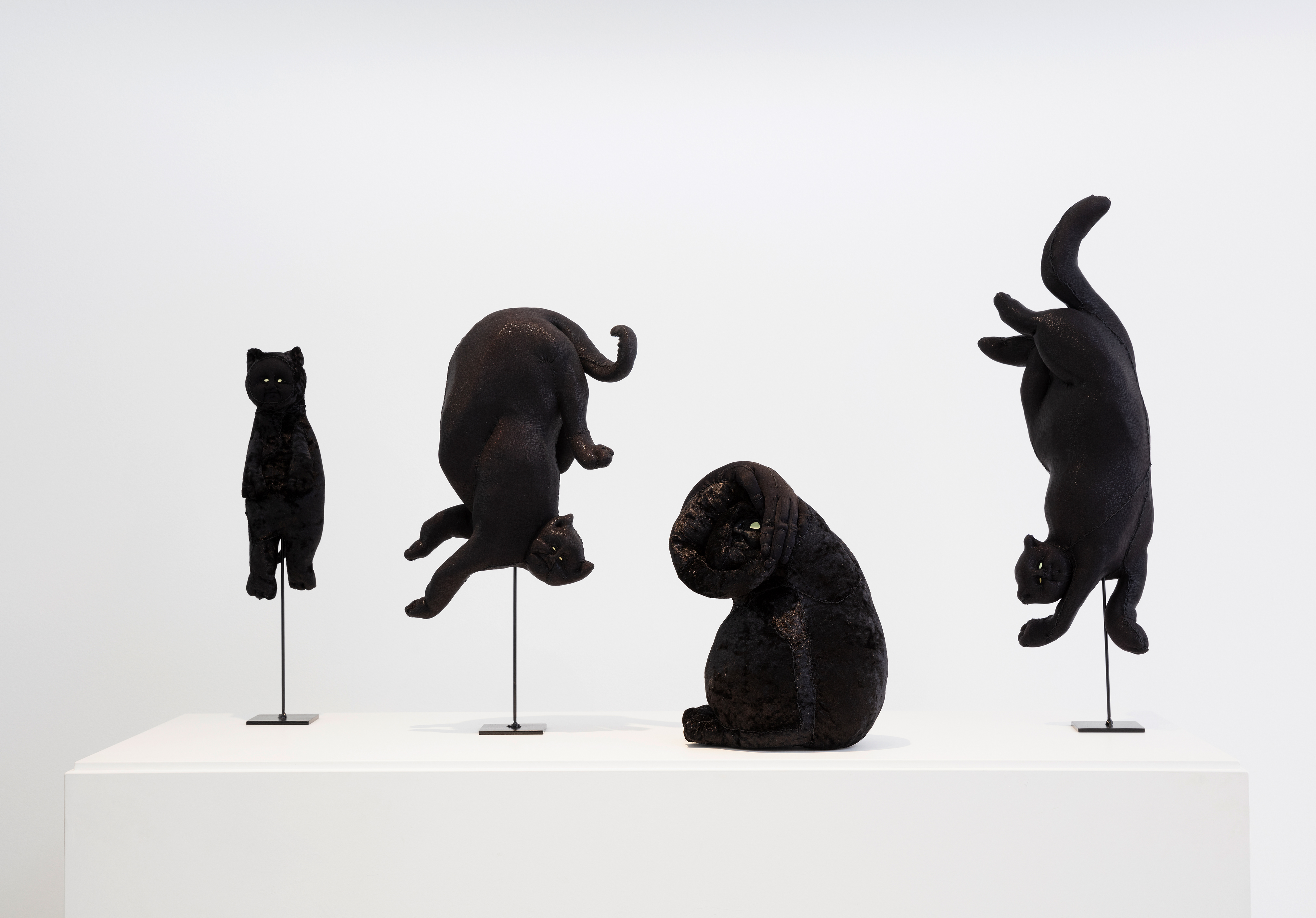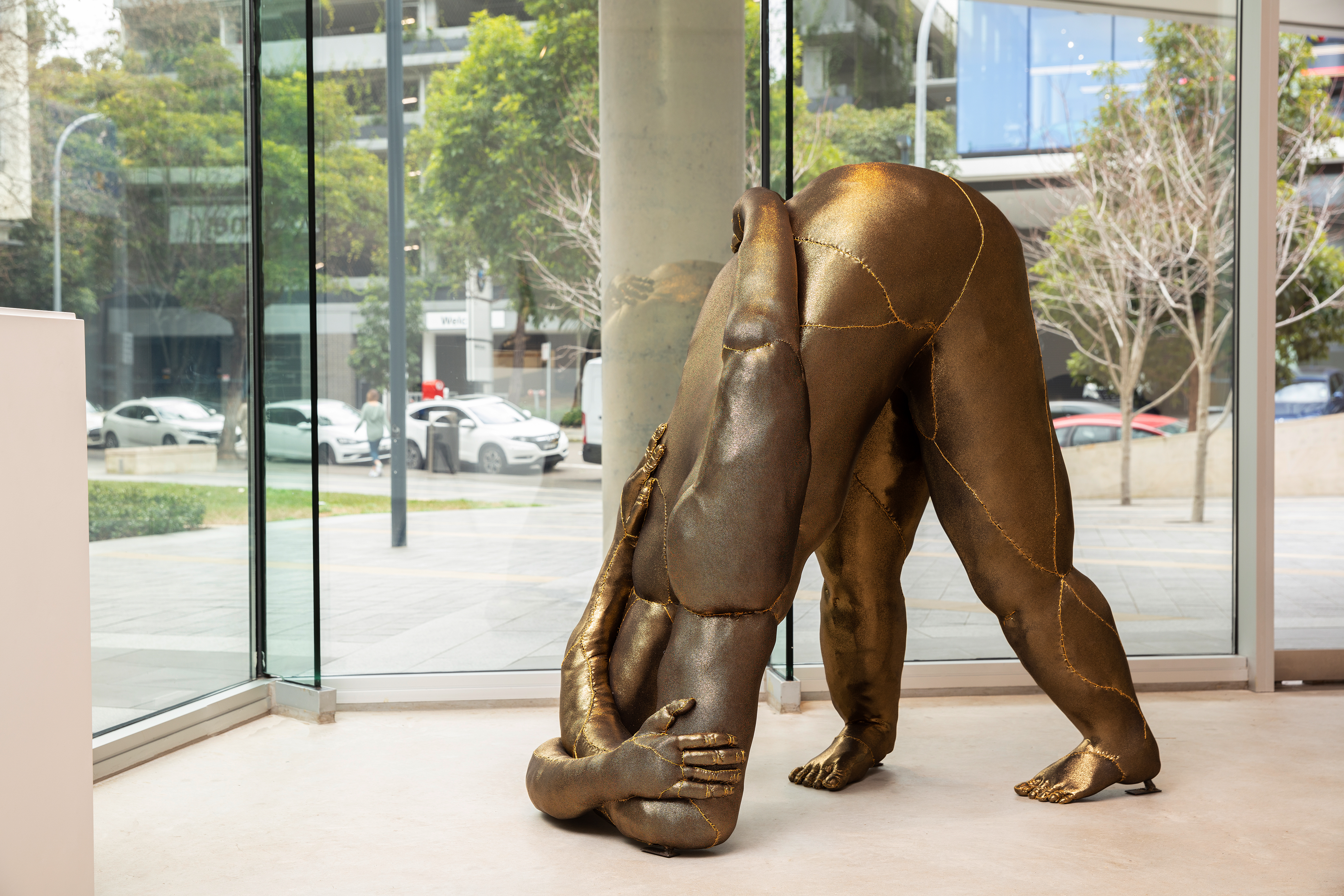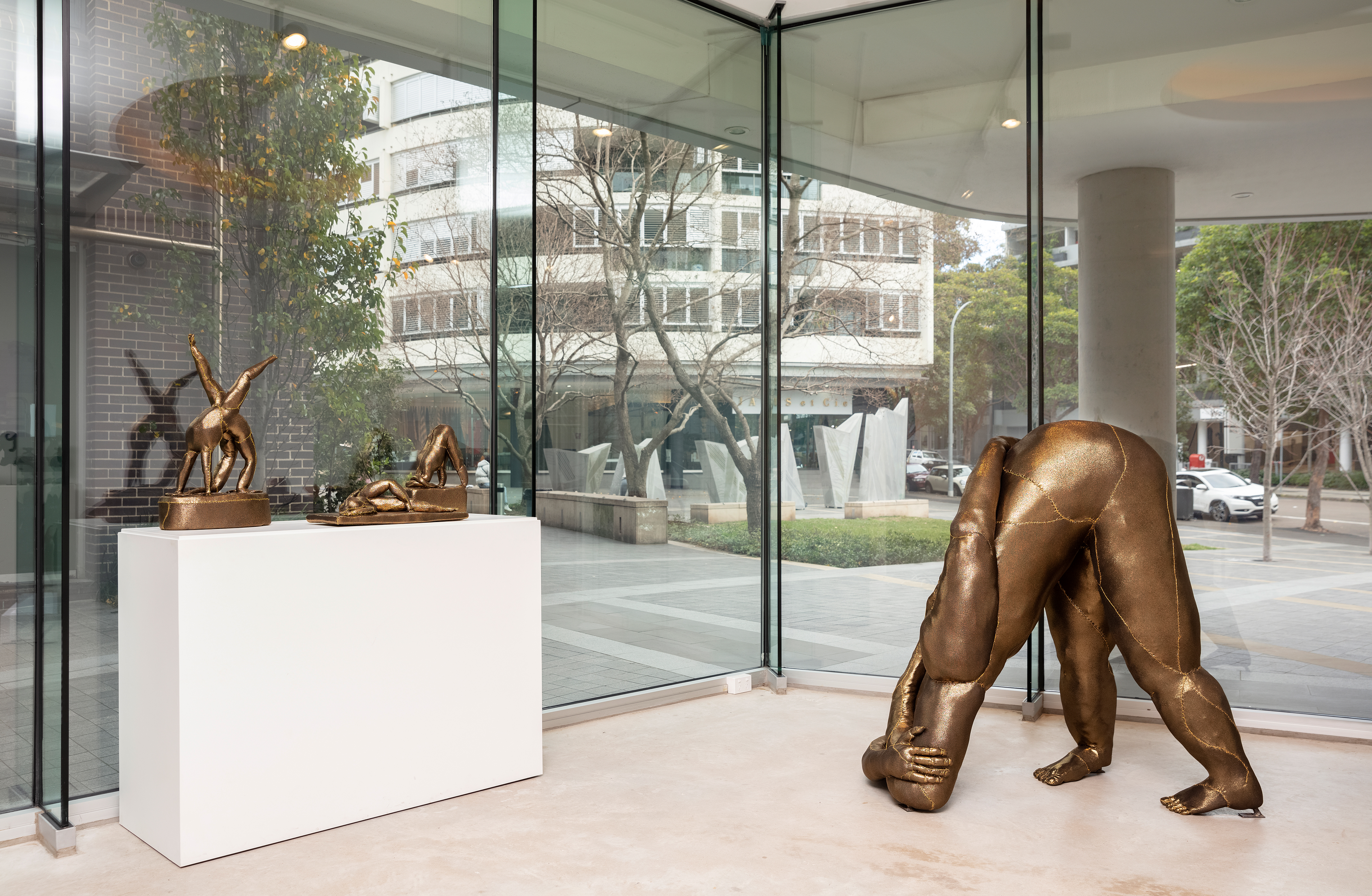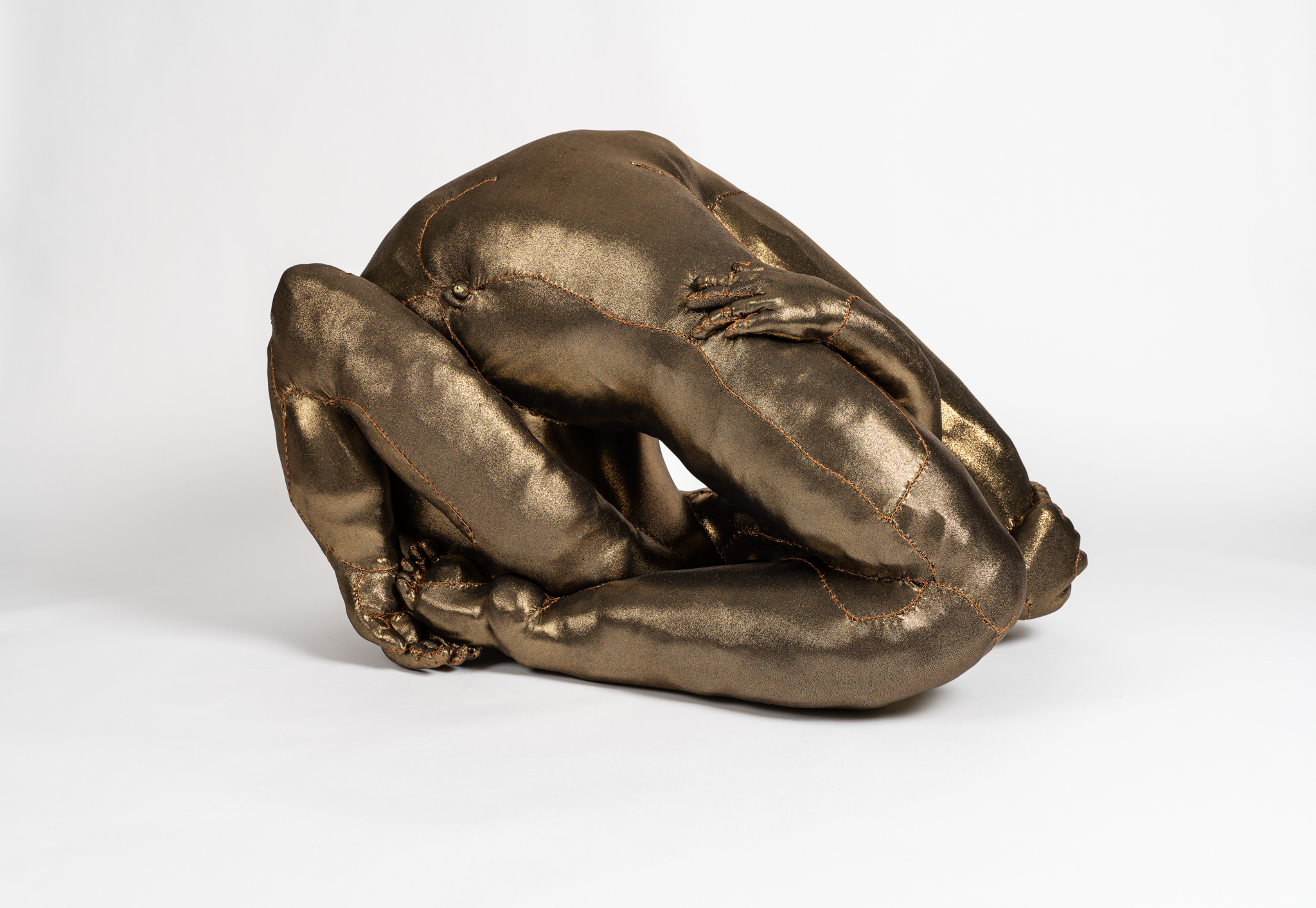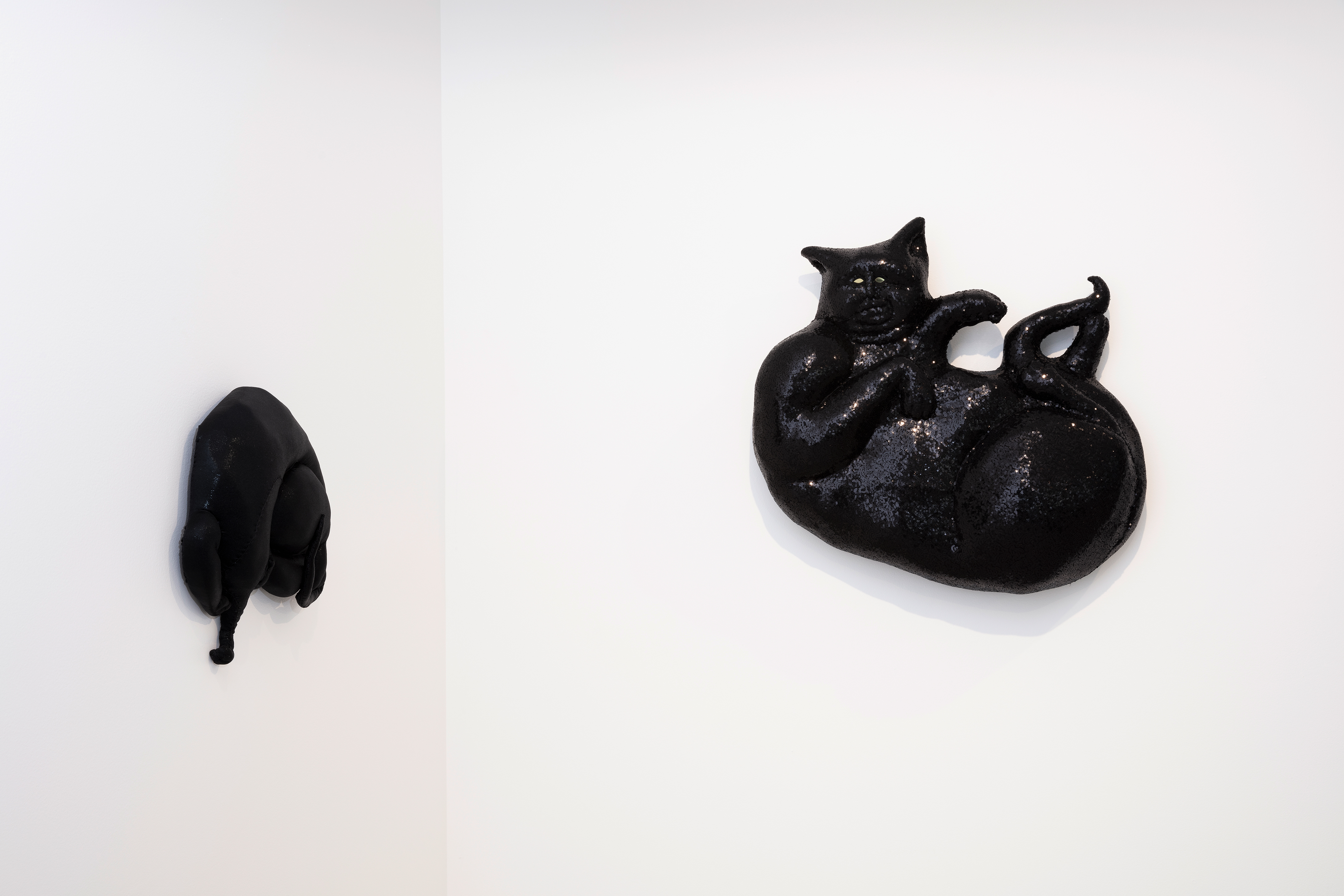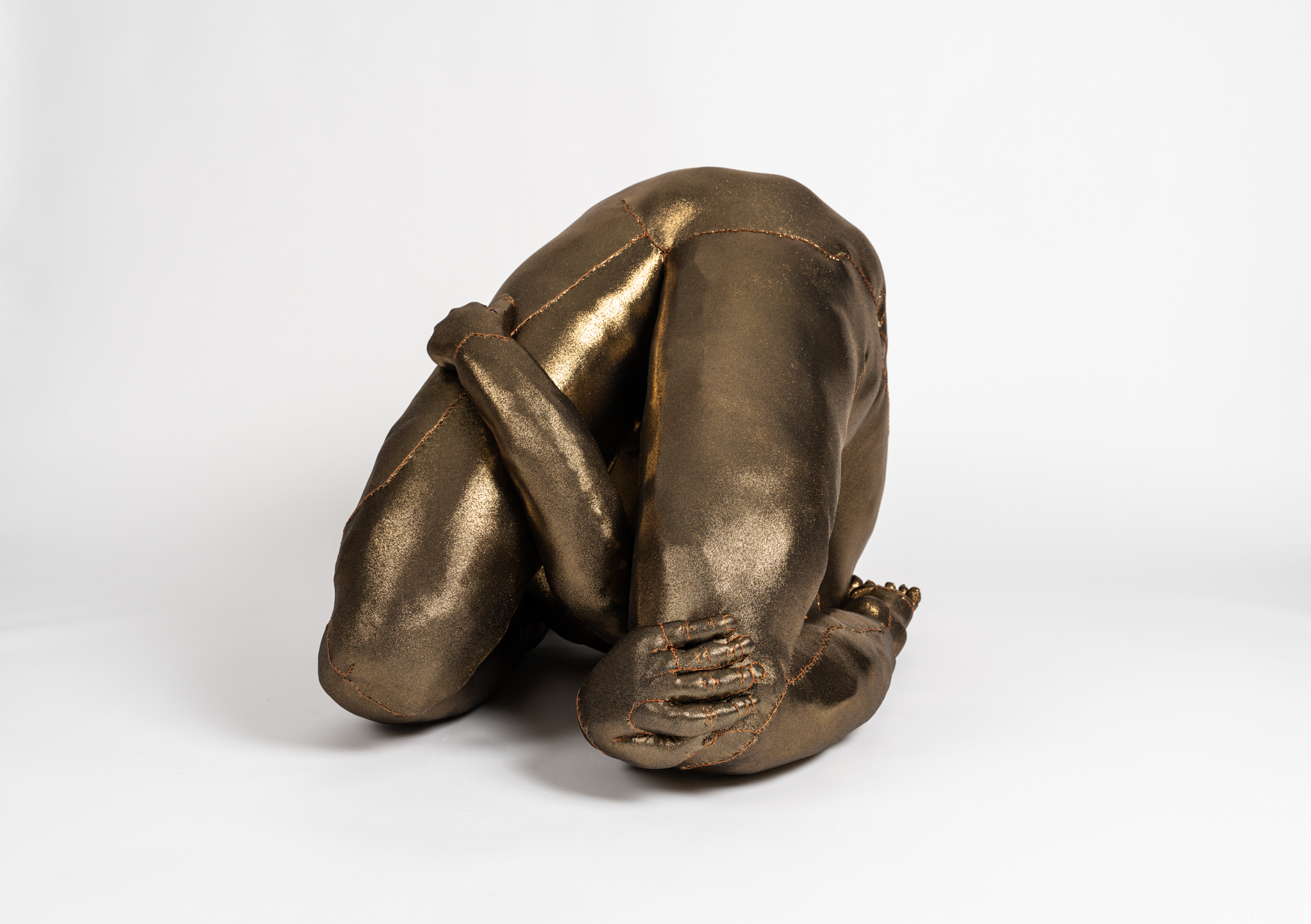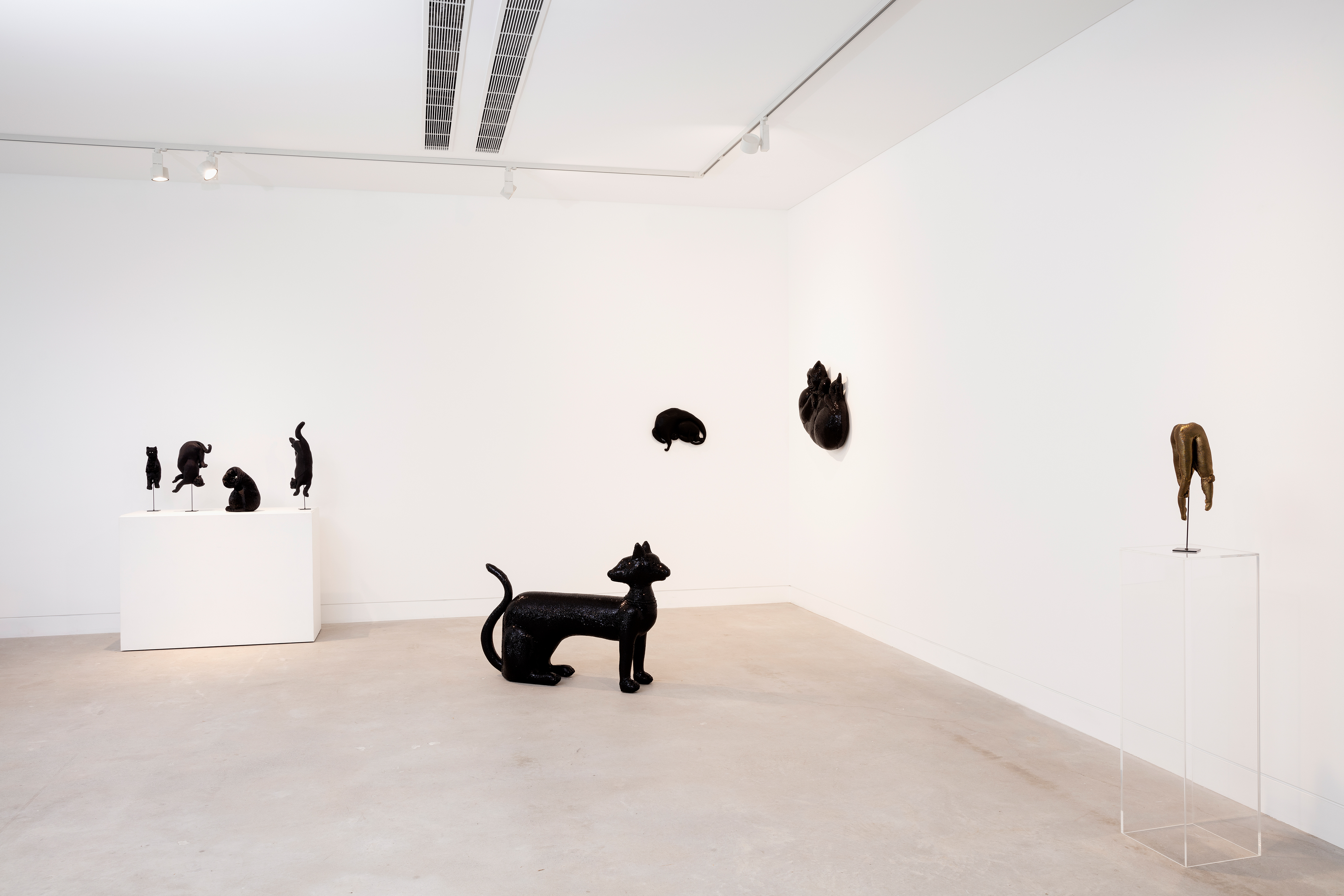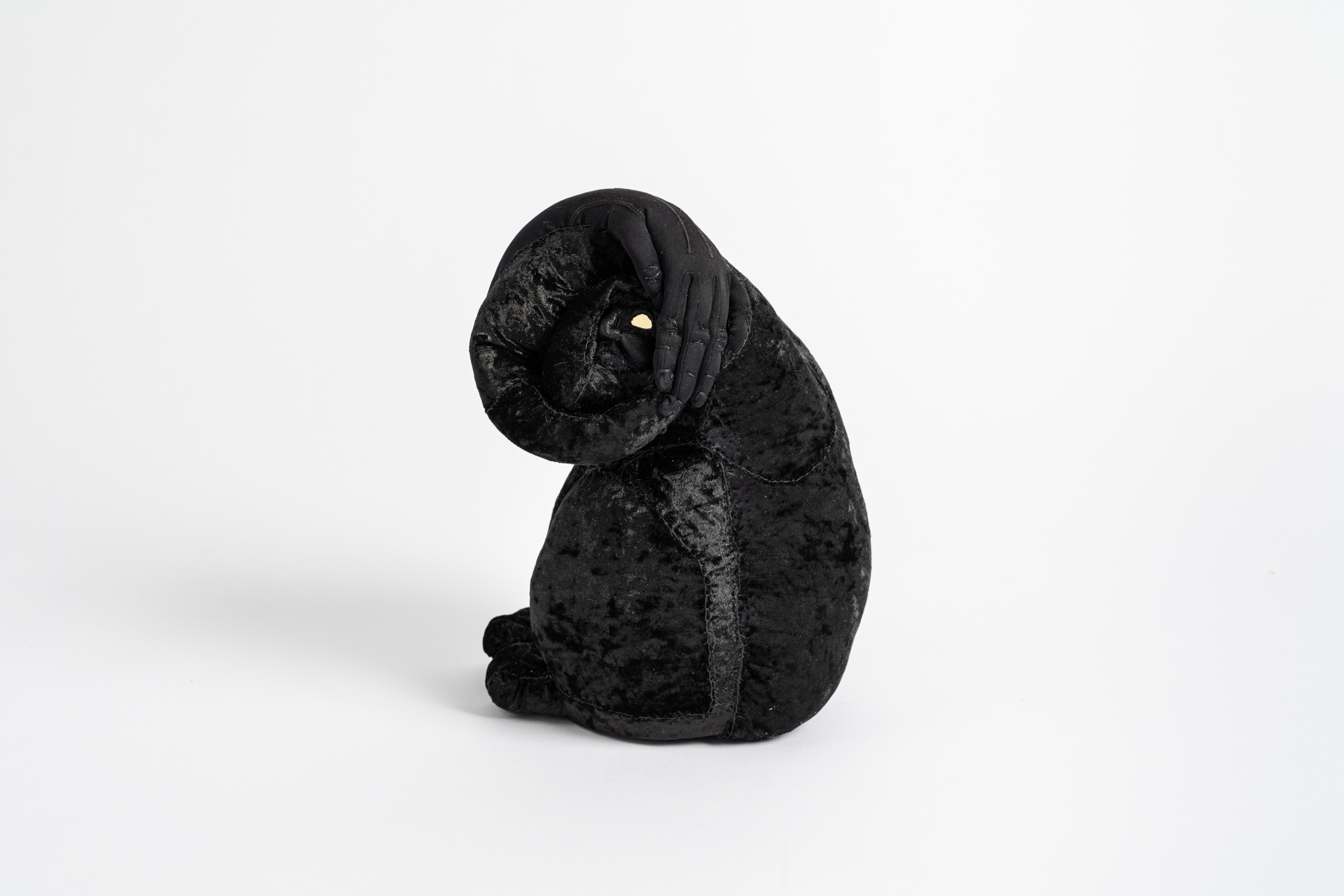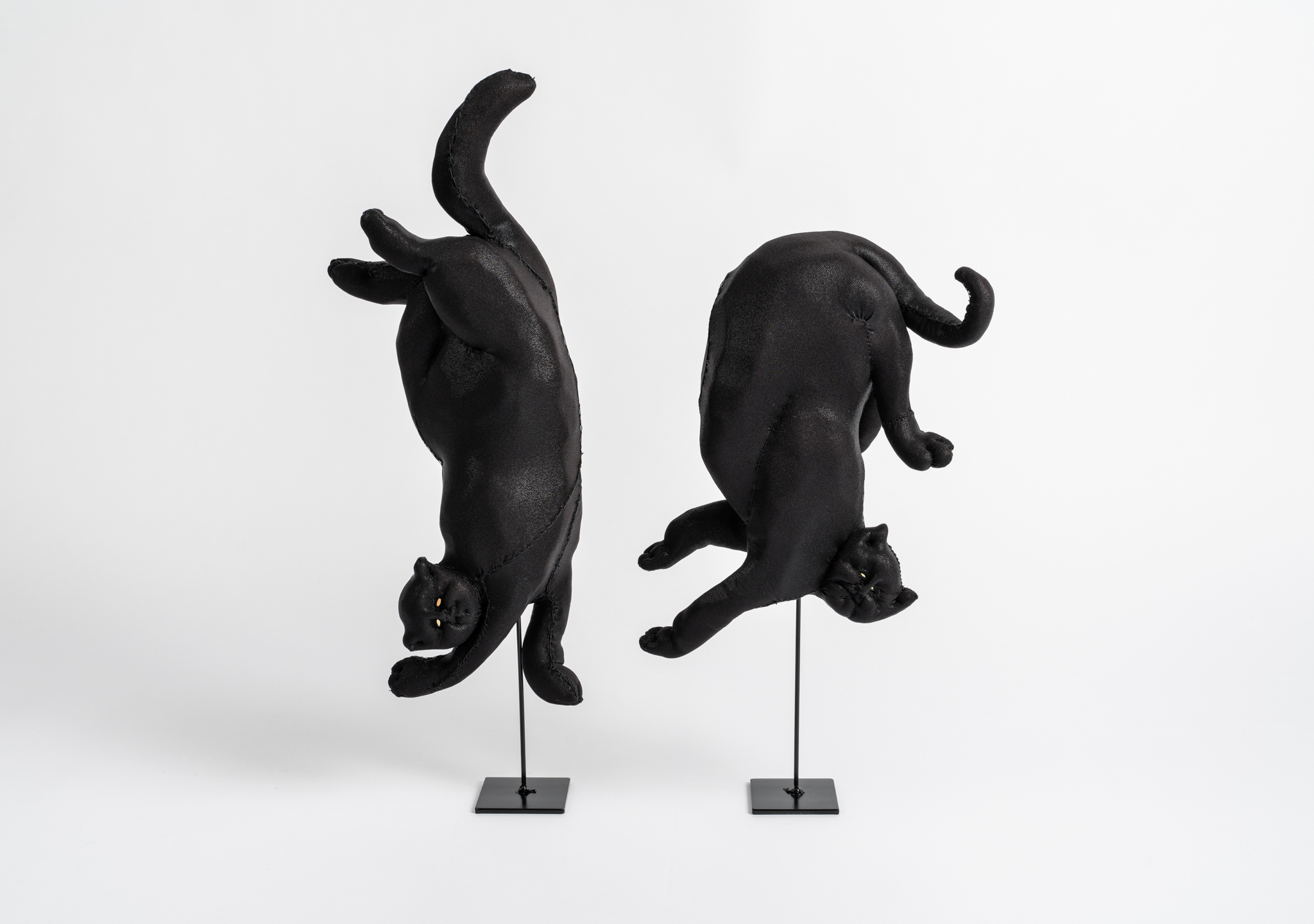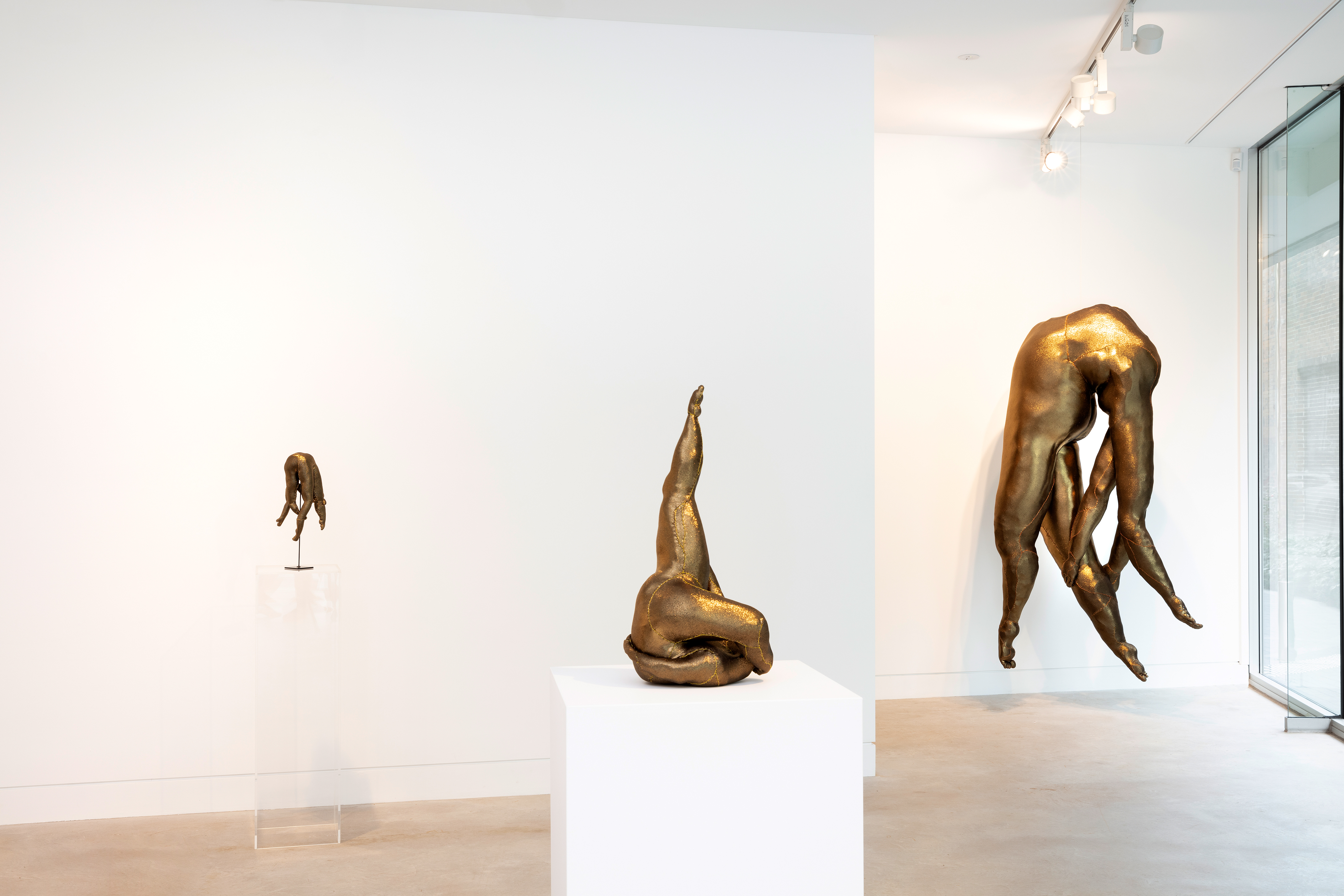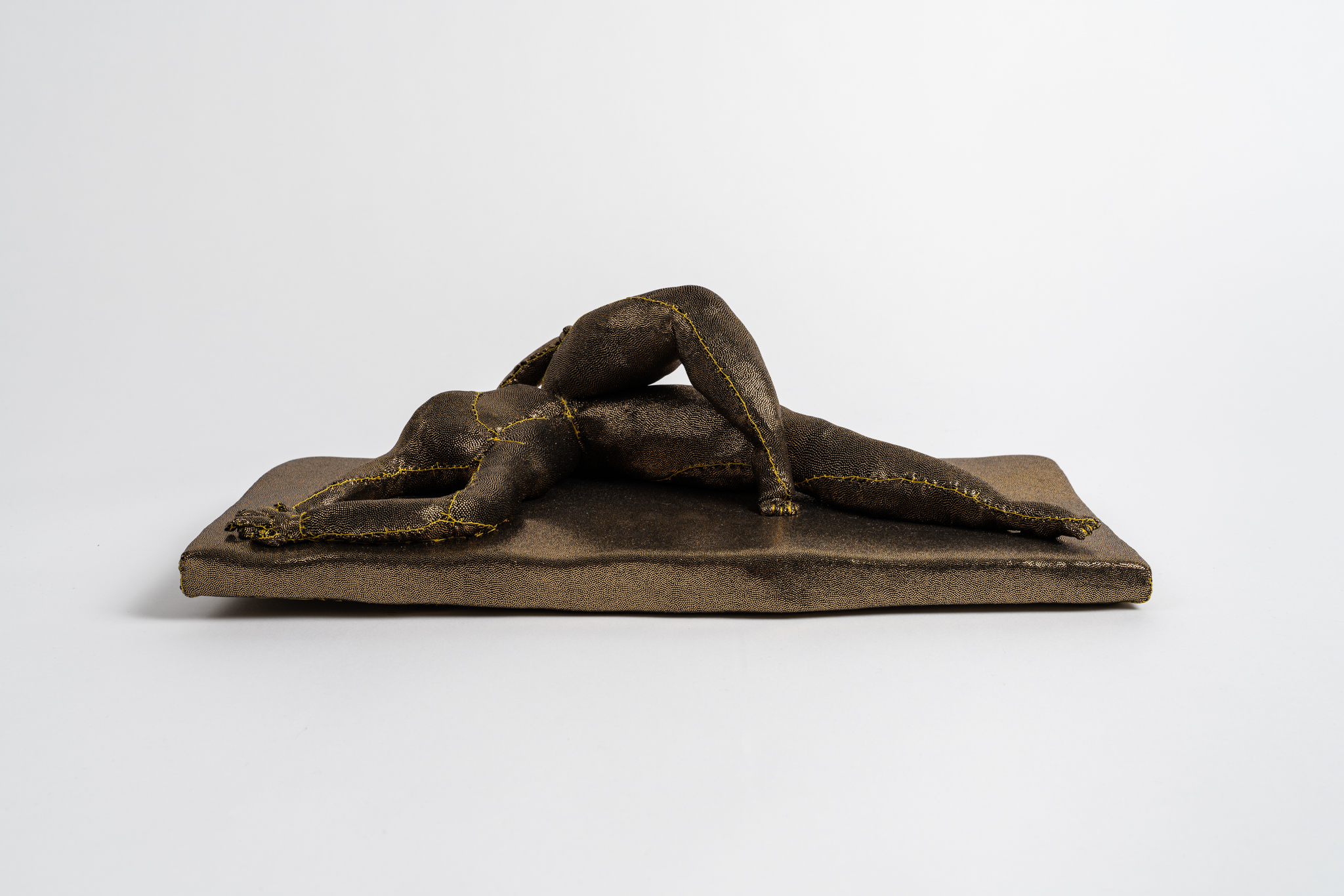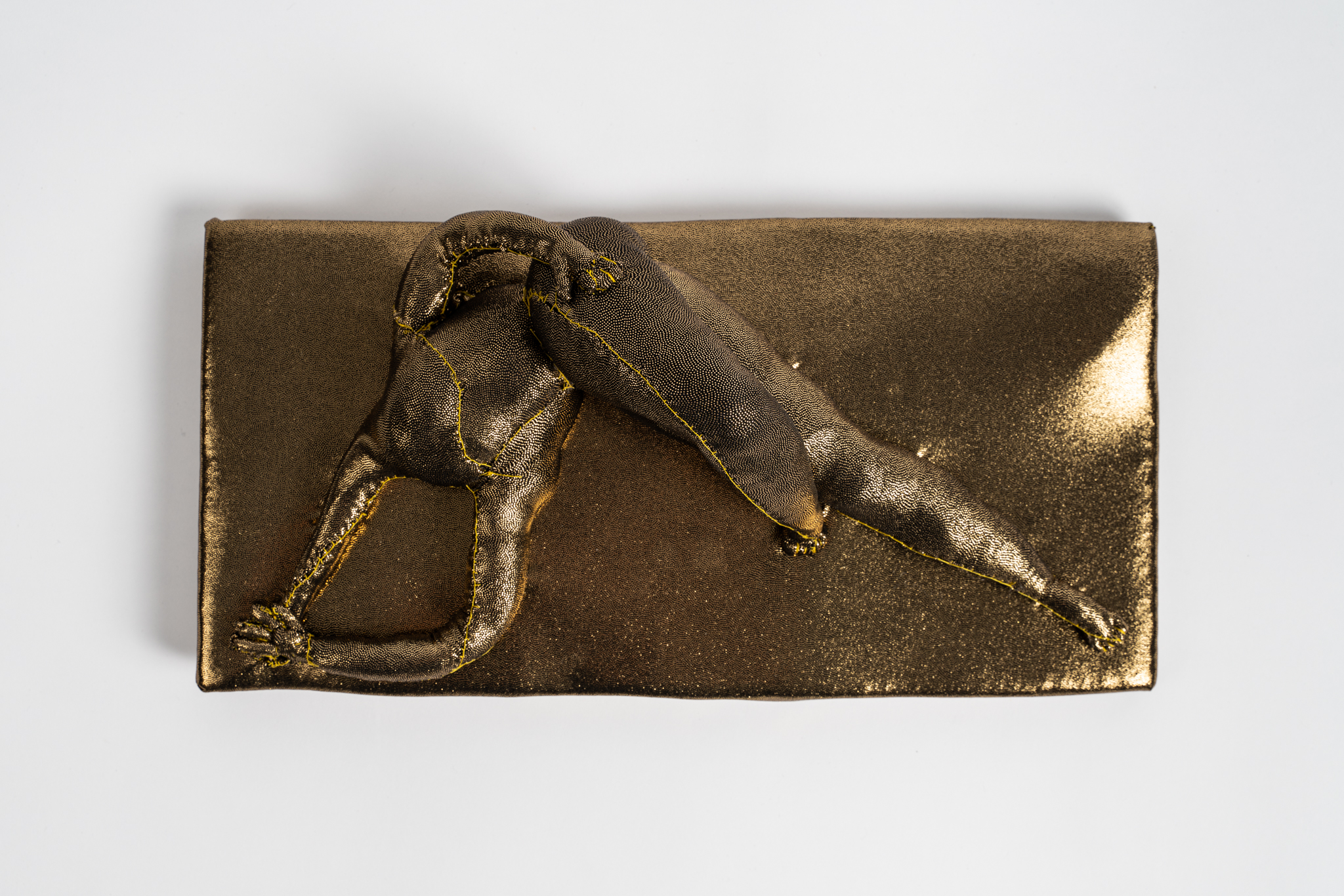Catalogue Essay by Gemma Weston (below)
2021
Solo Exhibition
Gallery Sally Dan-Cuthbert
Sydney, Australia
Install photography by Simon Hewson
Studio Photographs by Pixel Poetry
Solo Exhibition
Gallery Sally Dan-Cuthbert
Sydney, Australia
Install photography by Simon Hewson
Studio Photographs by Pixel Poetry
Dream State
Mixed media (inc. EPE foam, handstitched lycra, artificial human eyes, mirror, beads, sequins, steel armatures by Neil Aldum, steel stands by Andrew Christie)
Various dimensions
The development of these works was supported by the WA Department of Local Government, Sport and Cultural Industries.
Mixed media (inc. EPE foam, handstitched lycra, artificial human eyes, mirror, beads, sequins, steel armatures by Neil Aldum, steel stands by Andrew Christie)
Various dimensions
The development of these works was supported by the WA Department of Local Government, Sport and Cultural Industries.
There is a process in Jungian analysis of visualising a complex in order to begin a conversation with it. A ‘complex’ is a pattern of emotions or beliefs organised around a theme. ‘Visualisation’ creates a physical form for those emotions, a character or persona. Perhaps a marauding sea-witch of self-doubt is protecting a clamshell that contains your voice, perhaps a hyper-rational golden Sphynx will offer a clever riddle that opens a trapdoor in its chest. Perhaps an oil-slick blob that sometimes looks just like you shapeshifts in the shadows. Emotions themselves might evade language, but once they become a discrete visual entity disentangled from the self they can be looked at with clear eyes, and given a talking to.
The characters Tarryn Gill creates perform a similar function; they draw from a reserve of strange and familiar images - gods, monsters, the Rocky Horror Picture Show, sculptural antiquities, medieval illustration, Muppets, her family, her cat, herself – to reach into the heart, brain and belly and draw something deep out into dialogue. Her sculptures produce a waking ‘dream state’ – awash with symbols and weird logic and studded with guides to lead us on our quest.
Character-building has been a part of Tarryn’s practice since her first major exhibition as a solo artist, You’ll be sorry when I’m dead at Moana Project Space, Perth in 2014. A ring of foam and fabric ‘guardians’ embedded with speakers sung a babbling eulogy for a body laid in state, dismembered but recognisably human. The guardians were inspired by encounters with funerary sculpture across continents. A 2013 residency at the Freud Museum had presented the opportunity to study collections of antiquities preserved with Sigmund and Anna Freud’s consulting rooms; a visit to the Tokyo National Museum around the same time had introduced the Haniwa, anthropomorphic statues placed in burial grounds to ward off evil spirits.
Tarryn’s characters – even those standing guard at the tomb - loosen the knot of difficult feeling with a balm of theatrical levity. Her shift to solo practice followed a decade of high-profile collaboration producing film, photography and performance with artist Pilar Mata Dupont, as well as occasional forays into design for theatre. Another significant influence on both her collaborative and solo practices is a background in calisthenics, a sport of skill, strength and glamour. She performed competitively from age five to twenty-five. Later, work in theatre enabled experimentation with a ‘Henson style’ technique of foam puppetry. Tarryn recognised its potential as a sculptural form that could synthesize her interests in the body and in costume, and also how much pleasure the process brought her. Her sculptures hold this feeling: the sense of someone giving themselves permission to find joy in something freshly unearthed.
Since the inclusion of another group of guardians in the 2015 Adelaide Biennial, Magic Object, Gill’s repertoire has expanded to include characters of different psychological resonance. Frequently appearing are a pantheon of ‘tricksters’, human-animal chimeras of playful but disconcerting intent. Like the guardian, the trickster is an archetype that appears across the breadth of human storytelling, using secret knowledge and enticing pranks to creativity undermine established logic. See: The Fool card in Tarot arcana, Puck from Shakespeare’s Midsummer Night’s dream or the djiti-djiti (the original, Noongar name for the ‘willy wagtail’) luring children away from the fire with song and dance. In their challenge to authority, tricksters are closely associated with another very Jungian form, the ‘shadow’ – a second self that contains all of the parts of us we refuse to consciously acknowledge, which can manifest without warning. Frequently, Tarryn creates relationships between trickster-like figures and doubled or two faced beings; these are often modelled on her own face, or on members of her family.
A recent opportunity to upscale has introduced another type of figure. Previous works have stayed close to the ‘real’ dimensions of human or animal bodies, dependant on plinths or other supports - oversized disembodied heads have suggested larger-than-life supernatural forces, but these have thus far remained wedded to the wall. For Body Work, curated by Erin Coates for Fremantle Art Centre in 2020, Tarryn used steel armatures to create outsized, free-standing and self supporting figures able to take up architectural space. These figures – the first in the ‘Limber’ series - were inspired by the awesome scale of Trembesi trees that Tarryn had walked amongst in Indonesia. In their curling branches she identified a powerful force that she coded as matriarchal, the suggestion of a quiet inner strength that could counter hypersexualised and objectifying representations of bodies identified as female. The figures inspired by these trees are monstrous but powerfully so, neither human, plant nor animal, embedded with eyes that make contact with their audience from all angles. Whereas previous works have used their fantastical qualities to suggest an otherworldly or internal space, the Limber series seem fantastically embodied, headless and yet not dissociative. They are firmly of this world rather than visiting from the next.
Dream State brings together a new series of Limber figures and a companion group of tricksters and shadows, humanoid cats who lounge in wait. A twin palette sets them in dialogue. Gold fabric simulates monumental, sculptural bronze; black sheens and sequins play tricks with the light. The golden bodies extend previous calisthenics poses to include protective and tender gestures that hold and gather limbs to themselves. A smaller series of maquette-style sculptures return to the desktop scale of funerary objects encountered in Freud’s study.
While the pairing might suggest opposition, the two ‘categories’ of sculptures are arranged across space as if they are partners in a dance. Shadow or trickster figures can often be framed as villains, but their qualities are not essentially negative. Fixed binaries, like good and bad, can be destabilising forces in themselves. Tricksters can balance authoritarian tendencies, or soften what is calcified with necessary questioning. The shadow simply absorbs the things we won’t admit to; sometimes these can be ugly, but they might also be beautiful things left to wilt in the dark.
To return to Jung, ignoring either shadow or trickster is to put one’s self in peril; both will be with us forever, no matter how much we dodge or repress. Avoidance only increases their power. To live more comfortably with ourselves, and in our bodies, it makes better sense to visualise our tricky parts and shadows as something other than adversaries. Perhaps they could be sidekicks, wisecracking Disney animal friends that can helps us on our way. Or, our dance partners. Better, perhaps, to choreograph a waltz of alternating leads, delight in how dark sequins shimmer, and limber up.
Text by: Gemma Weston
Gemma Weston is Perth Festival Visual Arts Program Associate and a member of the editorial committee for Semaphore online.
The characters Tarryn Gill creates perform a similar function; they draw from a reserve of strange and familiar images - gods, monsters, the Rocky Horror Picture Show, sculptural antiquities, medieval illustration, Muppets, her family, her cat, herself – to reach into the heart, brain and belly and draw something deep out into dialogue. Her sculptures produce a waking ‘dream state’ – awash with symbols and weird logic and studded with guides to lead us on our quest.
Character-building has been a part of Tarryn’s practice since her first major exhibition as a solo artist, You’ll be sorry when I’m dead at Moana Project Space, Perth in 2014. A ring of foam and fabric ‘guardians’ embedded with speakers sung a babbling eulogy for a body laid in state, dismembered but recognisably human. The guardians were inspired by encounters with funerary sculpture across continents. A 2013 residency at the Freud Museum had presented the opportunity to study collections of antiquities preserved with Sigmund and Anna Freud’s consulting rooms; a visit to the Tokyo National Museum around the same time had introduced the Haniwa, anthropomorphic statues placed in burial grounds to ward off evil spirits.
Tarryn’s characters – even those standing guard at the tomb - loosen the knot of difficult feeling with a balm of theatrical levity. Her shift to solo practice followed a decade of high-profile collaboration producing film, photography and performance with artist Pilar Mata Dupont, as well as occasional forays into design for theatre. Another significant influence on both her collaborative and solo practices is a background in calisthenics, a sport of skill, strength and glamour. She performed competitively from age five to twenty-five. Later, work in theatre enabled experimentation with a ‘Henson style’ technique of foam puppetry. Tarryn recognised its potential as a sculptural form that could synthesize her interests in the body and in costume, and also how much pleasure the process brought her. Her sculptures hold this feeling: the sense of someone giving themselves permission to find joy in something freshly unearthed.
Since the inclusion of another group of guardians in the 2015 Adelaide Biennial, Magic Object, Gill’s repertoire has expanded to include characters of different psychological resonance. Frequently appearing are a pantheon of ‘tricksters’, human-animal chimeras of playful but disconcerting intent. Like the guardian, the trickster is an archetype that appears across the breadth of human storytelling, using secret knowledge and enticing pranks to creativity undermine established logic. See: The Fool card in Tarot arcana, Puck from Shakespeare’s Midsummer Night’s dream or the djiti-djiti (the original, Noongar name for the ‘willy wagtail’) luring children away from the fire with song and dance. In their challenge to authority, tricksters are closely associated with another very Jungian form, the ‘shadow’ – a second self that contains all of the parts of us we refuse to consciously acknowledge, which can manifest without warning. Frequently, Tarryn creates relationships between trickster-like figures and doubled or two faced beings; these are often modelled on her own face, or on members of her family.
A recent opportunity to upscale has introduced another type of figure. Previous works have stayed close to the ‘real’ dimensions of human or animal bodies, dependant on plinths or other supports - oversized disembodied heads have suggested larger-than-life supernatural forces, but these have thus far remained wedded to the wall. For Body Work, curated by Erin Coates for Fremantle Art Centre in 2020, Tarryn used steel armatures to create outsized, free-standing and self supporting figures able to take up architectural space. These figures – the first in the ‘Limber’ series - were inspired by the awesome scale of Trembesi trees that Tarryn had walked amongst in Indonesia. In their curling branches she identified a powerful force that she coded as matriarchal, the suggestion of a quiet inner strength that could counter hypersexualised and objectifying representations of bodies identified as female. The figures inspired by these trees are monstrous but powerfully so, neither human, plant nor animal, embedded with eyes that make contact with their audience from all angles. Whereas previous works have used their fantastical qualities to suggest an otherworldly or internal space, the Limber series seem fantastically embodied, headless and yet not dissociative. They are firmly of this world rather than visiting from the next.
Dream State brings together a new series of Limber figures and a companion group of tricksters and shadows, humanoid cats who lounge in wait. A twin palette sets them in dialogue. Gold fabric simulates monumental, sculptural bronze; black sheens and sequins play tricks with the light. The golden bodies extend previous calisthenics poses to include protective and tender gestures that hold and gather limbs to themselves. A smaller series of maquette-style sculptures return to the desktop scale of funerary objects encountered in Freud’s study.
While the pairing might suggest opposition, the two ‘categories’ of sculptures are arranged across space as if they are partners in a dance. Shadow or trickster figures can often be framed as villains, but their qualities are not essentially negative. Fixed binaries, like good and bad, can be destabilising forces in themselves. Tricksters can balance authoritarian tendencies, or soften what is calcified with necessary questioning. The shadow simply absorbs the things we won’t admit to; sometimes these can be ugly, but they might also be beautiful things left to wilt in the dark.
To return to Jung, ignoring either shadow or trickster is to put one’s self in peril; both will be with us forever, no matter how much we dodge or repress. Avoidance only increases their power. To live more comfortably with ourselves, and in our bodies, it makes better sense to visualise our tricky parts and shadows as something other than adversaries. Perhaps they could be sidekicks, wisecracking Disney animal friends that can helps us on our way. Or, our dance partners. Better, perhaps, to choreograph a waltz of alternating leads, delight in how dark sequins shimmer, and limber up.
Text by: Gemma Weston
Gemma Weston is Perth Festival Visual Arts Program Associate and a member of the editorial committee for Semaphore online.

